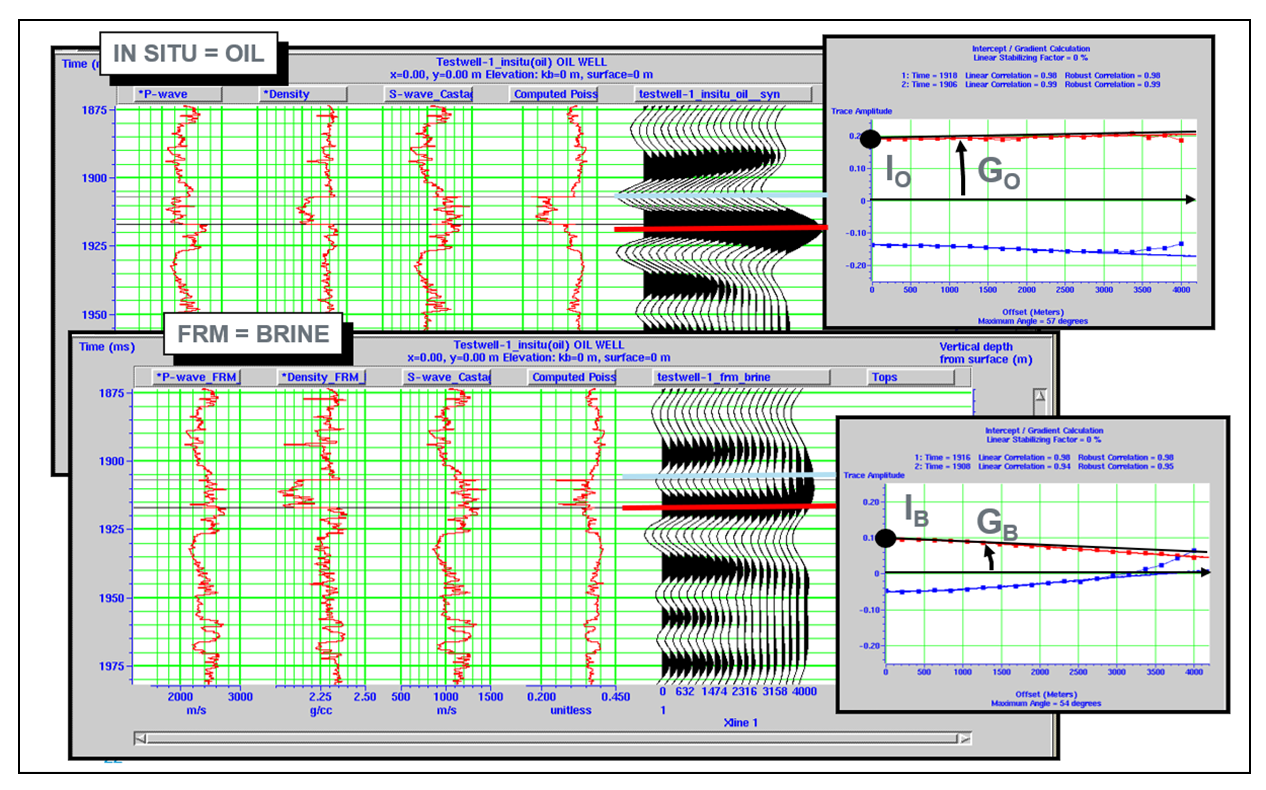HampsonRussell
Comprehensive Geophysical Solutions
Easy-to-use, advanced geophysical interpretation and analysis technology
This comprehensive suite of reservoir characterization tools integrates well logs, seismic data and geophysical processes into an easily navigated, intuitive package for fast results. Known for its ease of use, HampsonRussell makes sophisticated geophysical techniques accessible.
Solving Key Industry Challenges
Reduce the risks and costs associated with exploration and production with world-class, advanced geophysical interpretation and analysis from our HampsonRussell software.
Prospect Ranking
- Qualify areas of interest quickly
- Perform analysis to eliminate high-risk areas
- Improve data quality
Field Development
- Find the reservoir sweet spots with inversion
- Understand your rocks and simulate properties
- Map pay zones with facies analysis
- Evaluate uncertainty in reservoir predictions
Maximize reservoir recovery
- Predict reservoir properties like porosity and saturation
- Stay in zone by performing facies analysis
- Get a more detailed view of thin beds
Sophisticated geophysical techniques accessible to all geoscientists
HampsonRussell is a comprehensive suite of reservoir characterization tools that integrate well logs, seismic data and geophysical processes into an easily navigated intuitive package for fast results.
AVO modeling and analysis
Conditioning of pre-stack gathers
Post-stack and pre-stack inversion methods
Multi-attribute analysis and neural network-based log and volume predictions
HampsonRussell Modules
GeoAI
AVO
Strata
GeoSI
LithoSI
Emerge
Geoview
Attributes
Gather Conditioning
RockSI
ProAZ
Multi-Node Processing (MNP)
MapPredict
Pro4D
ProMC
AFI
GeoAI
GeoAI
Convolutional Neural Network, rock physics-driven reservoir property predictions
GeoAI provides an innovative approach to seismic reservoir characterization that simultaneously predicts multiple reservoir properties using a streamlined machine learning workflow. This method uses a rock physics driven machine learning technique, which is informed by rock physics theory and statistical simulations to generate synthetic data for a range of geological scenarios. By employing Convolutional Neural Networks (CNNs), GeoAI can efficiently estimate multiple rock property volumes with high resolution and agreement to blind wells.
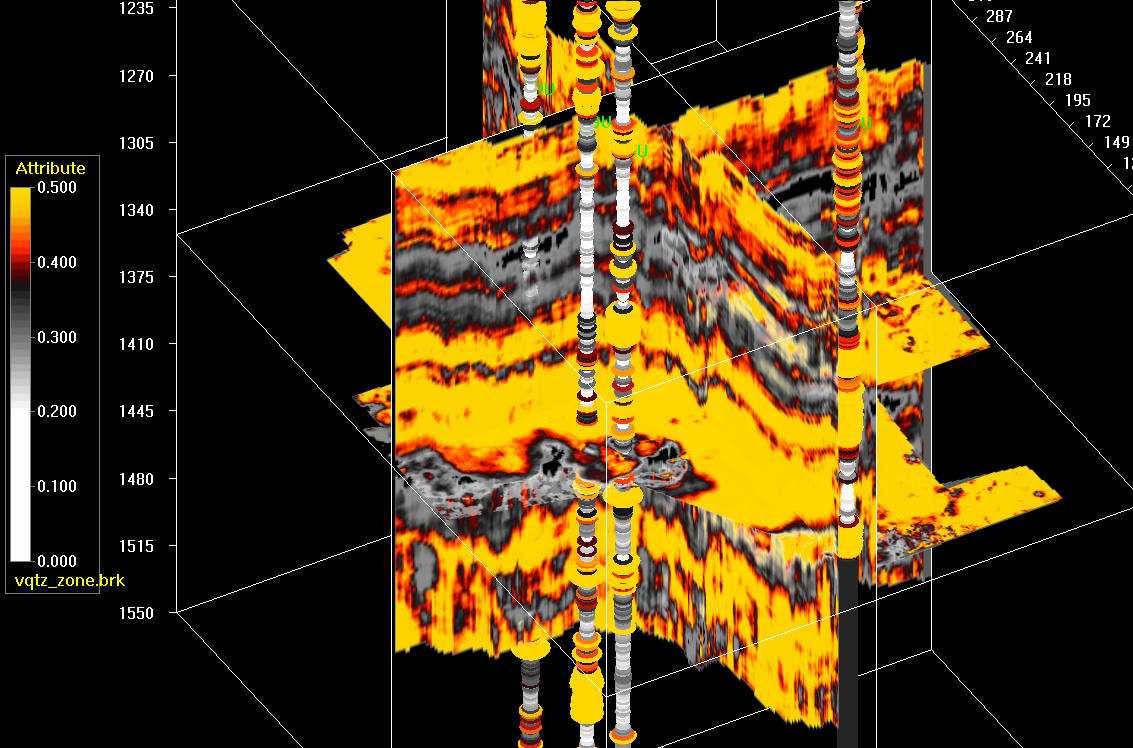
AVO
AVO
Comprehensive Reservoir Reconnaissance
AVO specializes in prestack seismic analysis and reservoir reconnaissance. This module has the tools for conditioning prestack seismic data to produce optimum attribute volumes, cross-plotting and interpretation functions for locating AVO anomalies, and AVO modeling tools for calibration.
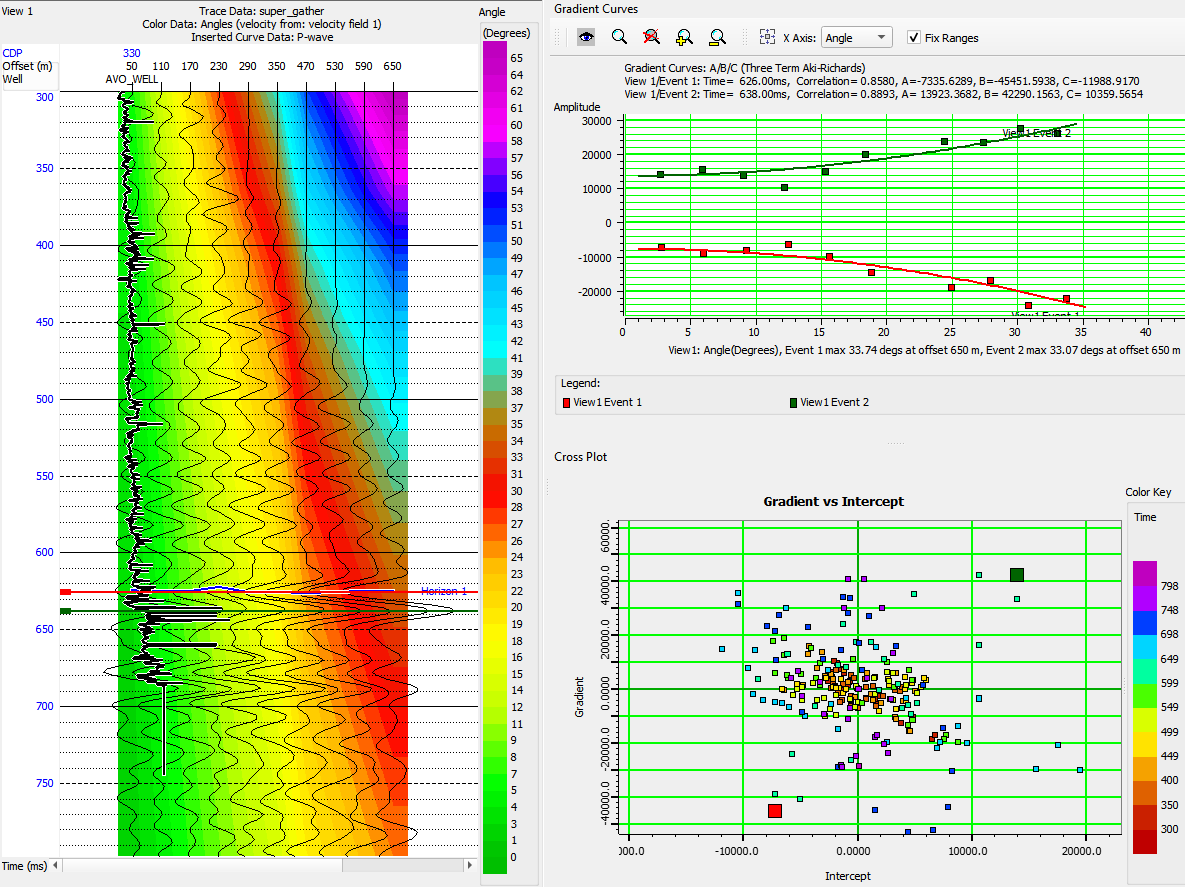
Strata
Strata
Industry standard inversion for quantitative interpretation
Strata performs both post-stack and pre-stack inversions. In the conventional post-stack domain, Strata analyzes post-stack seismic volumes to produce an acoustic impedance volume. In the pre-stack domain, Strata analyzes angle gathers or angle stacks to produce volumes of acoustic impedance, shear impedance, and density.
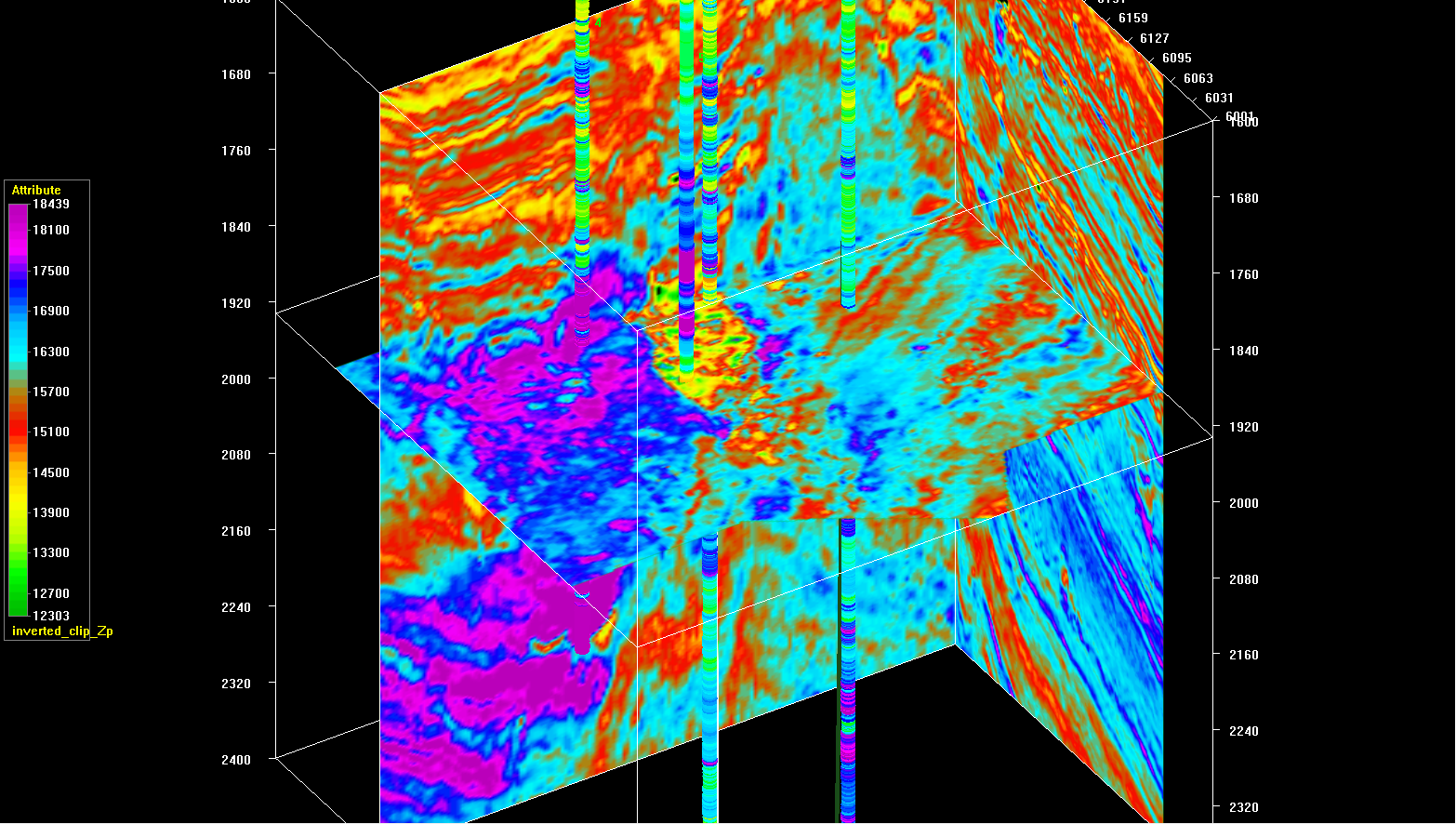
GeoSI
GeoSI
Geostatistical, multi-realization, highly detailed reservoir predictions
GeoSI is a pre-stack simultaneous elastic inversion that generates high-frequency stochastic models for high-resolution reservoir characterization and uncertainty analysis. It addresses the band-limited nature of deterministic inversion methods and integrates well data and seismic data at a fine scale within a stratigraphic geomodel framework.
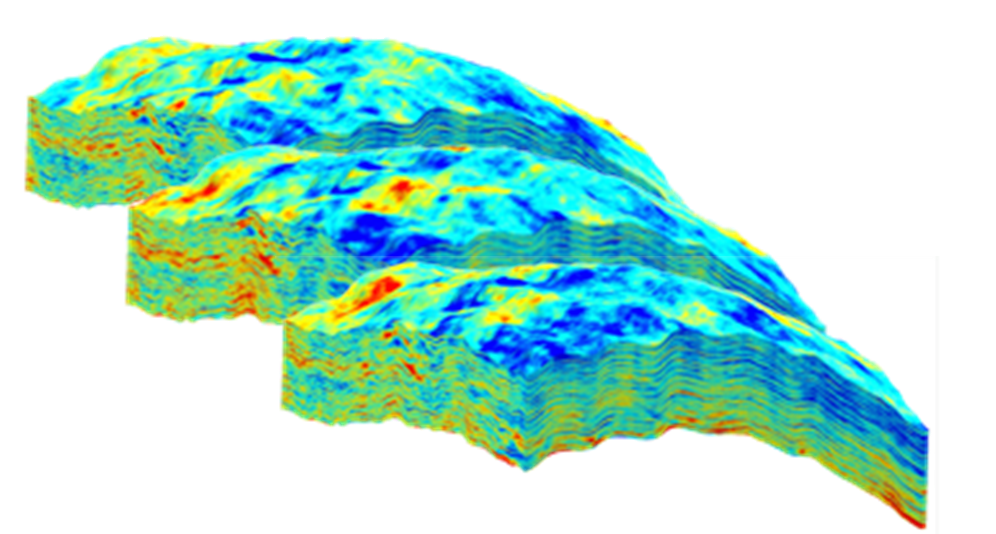
LithoSI
LithoSI
Bayesian Lithology Classification and Uncertainty Estimation
LithoSI quantifies uncertainty in seismic lithology and fluid prediction. Using multiple elastic parameters from the inversion of seismic data, LithoSI performs a supervised Bayesian classification to deliver probability cubes of predicted lithology and/or fluid properties. The integrated inversion and classification workflow provides superior definition of lithology classes and allows more accurate assessment of lithology probabilities.
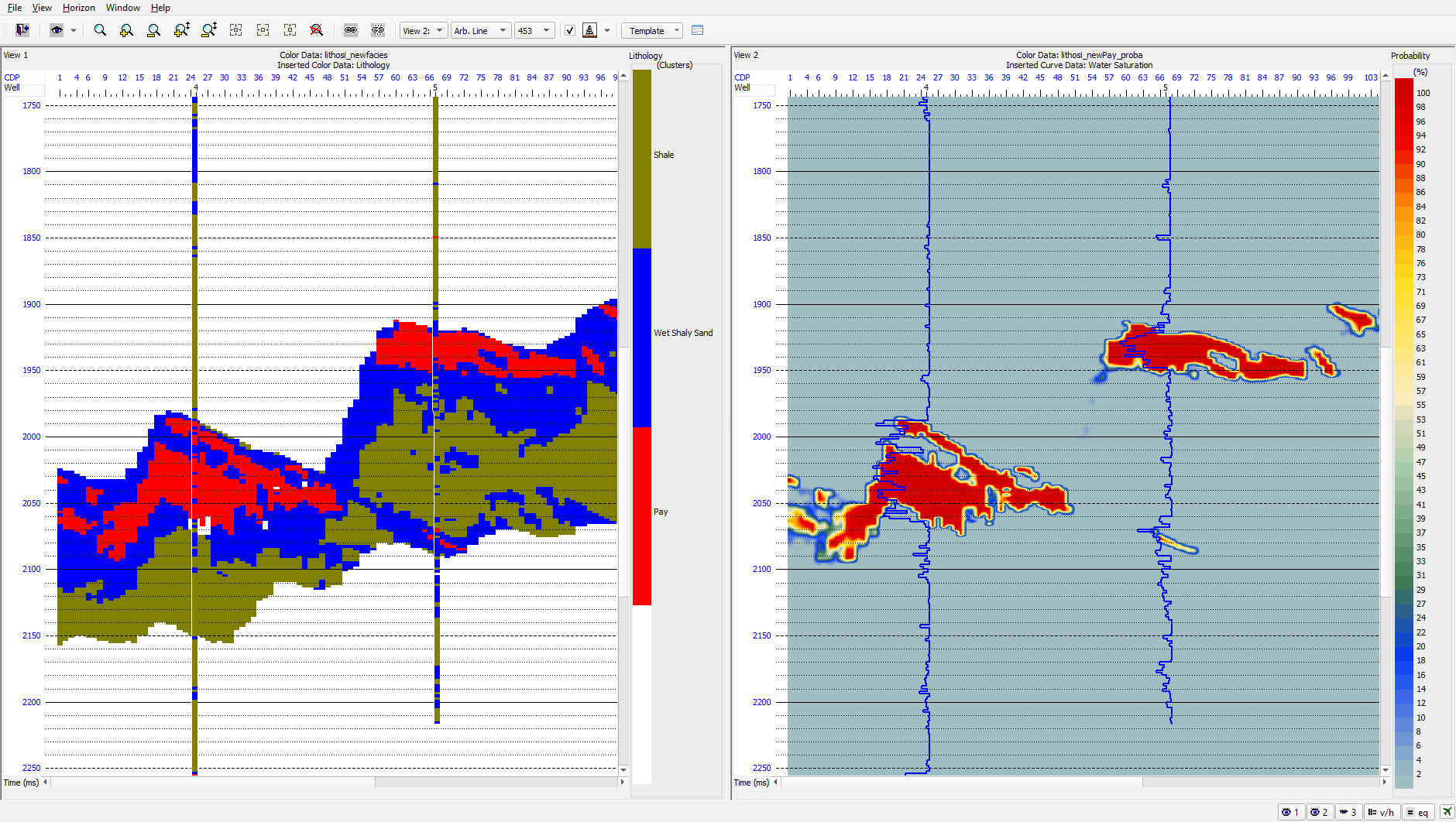
Emerge
Emerge
Machine learning multi-attribute prediction for reservoir properties
Emerge enables geostatistical, volumetric attribute prediction using well logs and attributes from seismic data. The predicted properties can be any available log types: such as porosity, velocity, density, gamma-ray, lithology and water saturation. Emerge can also be used to predict missing logs or parts of logs by leveraging existing logs that are common to the available wells.
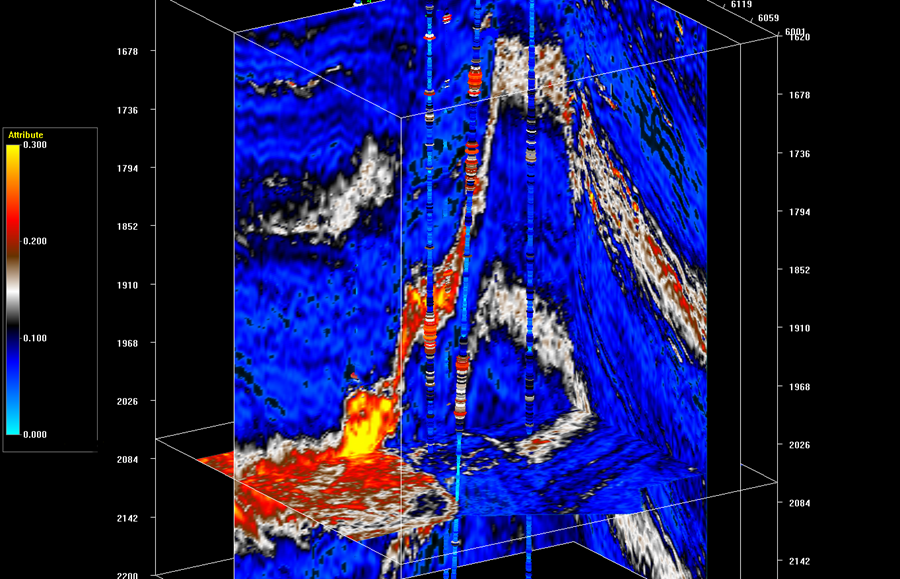
Geoview
Geoview
Foundational software with integrated geophysical toolbox
The integrated design of Geoview empowers users to access all HampsonRussell modules, their project data and processes from one centralized location.
Tools are provided to prepare and manage seismic data for use in seismic inversion, AVO analysis, reservoir characterization and visualization. Edit, create, or transform well log data for input into other petrophysical and modeling workflows.
Geoview also includes a set of pre-loaded process workflows that can be easily customized and shared with other users, as well as batch and chained processing which also increase efficiency. Integrated log and seismic interpretation tools give users the power to create accurate reservoir interpretations using crossplots, logs, volume attributes, horizons and data slices. This foundational product enables simultaneous viewing and manipulation of vertical profiles, models, maps, wavelets, and well log displays.
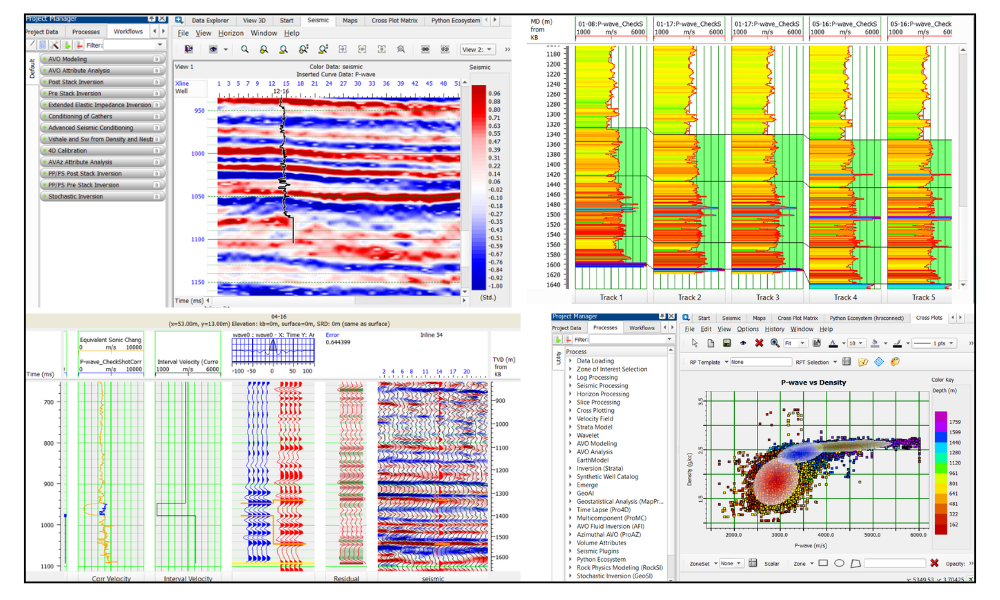
Attributes
Attributes
Seismic attributes for greater insight
Attributes is a package designed to create and extract a collection of advanced, multi-trace seismic attributes. These enhance the ability of seismic interpreters to analyze frequency content, reduce noise and detect fractures and other discontinuous features in seismic volumes.
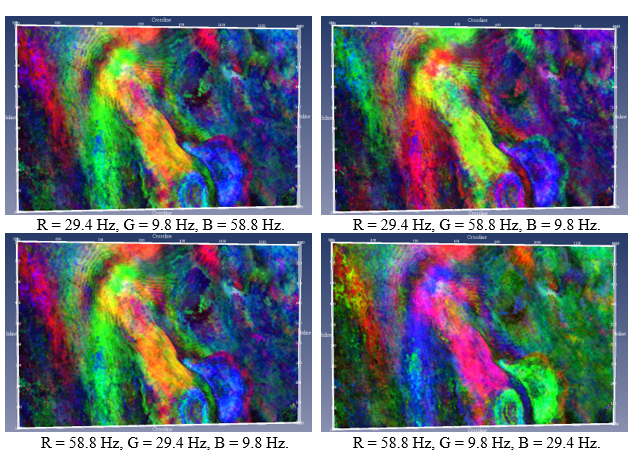
Gather Conditioning
Gather Conditioning
Produce AVO compliant, conditioned gathers for optimal analysis
This specialized set of applications improves the signal-to-noise ratio and alignment of CDP gather data in preparation for any prestack analysis process such as AVO or simultaneous inversion. Functionality includes Offset/Angle Super Gather, Mute, NMO, Trim Statics, Stack, Deconvolution, Filtering, Radon (Multiple Attenuation, S/N enhancement), Spectral Balancing and more. These are also included in the AVO product.
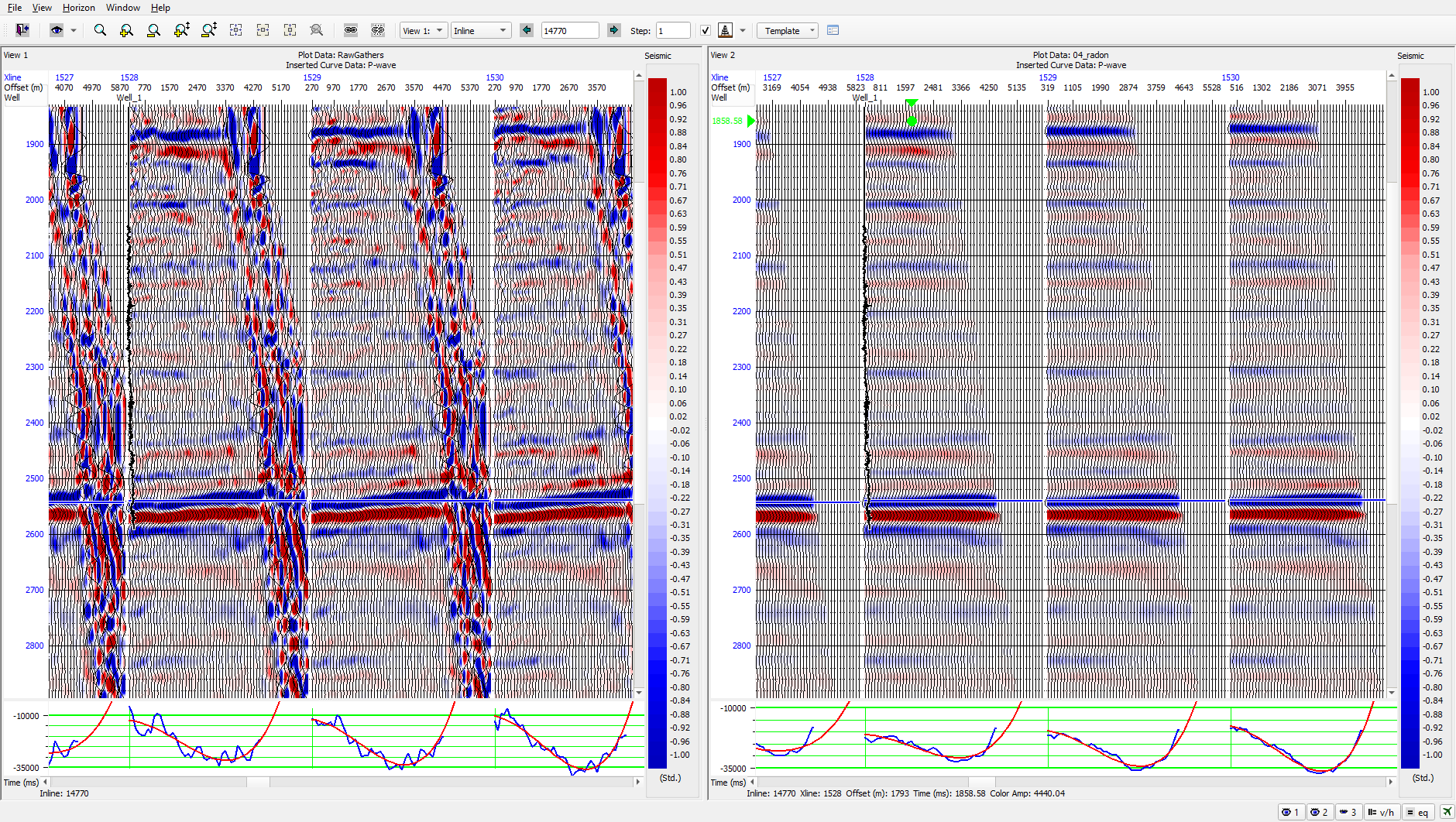
RockSI
RockSI
Powerful Rock physics modeling and simulation capabilities
RockSI provides a powerful solution for exploring the link between rock properties and seismic data for quantitative interpretation and feasibility studies. It can create detailed Rock Physics Models (RPMs), calibrate them with well data, and generate 3D and 4D Rock Physics Templates which show the relationship between seismic attributes, lithology, saturation, and pressure. It also provides statistical rock physics capabilities using Monte Carlo simulation to create training sets for lithology classification when well data are sparse or simulate the seismic signature of different production scenarios.
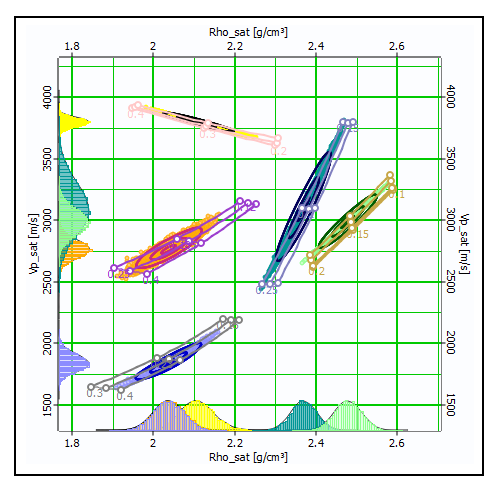
ProAZ
ProAZ
Anisotropy and stress analysis using azimuthal seismic data
ProAZ provides analysis methods to map fractures and predict stress by observing azimuthal variations in the P-wave seismic data. Prestack azimuthally processed seismic data are analyzed in terms of time and amplitude azimuthal variations attributed to anisotropic effects. ProAZ provides a series of tools to enable interpreters to interactively explore azimuthal variations in their datasets and generate azimuthal attributes to summarize the results.
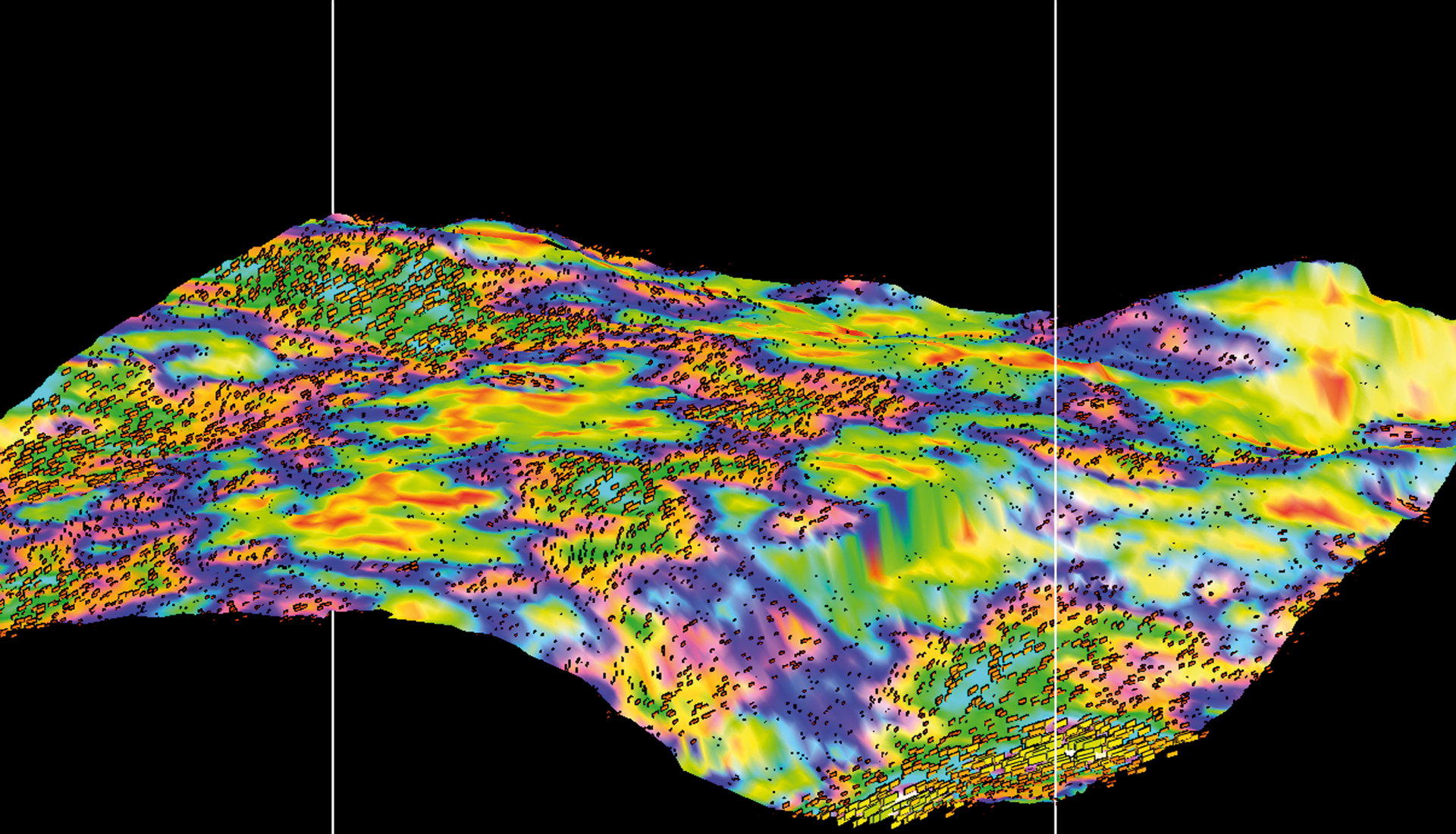
Multi-Node Processing (MNP)
Multi-Node Processing (MNP)
Accelerator for reducing processing run-time
Multi-Node Processing (MNP) enables the execution of complex processes across single or multiple machines seamlessly, whether on-premises or in the cloud. This distributed computing capability ensures rapid results and efficient resource allocation.
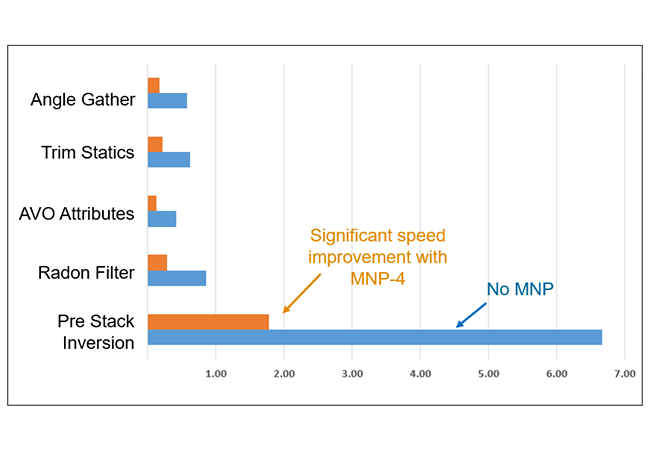
MapPredict
MapPredict
Geostatistical map analysis for reservoir predictions
MapPredict is a mapping tool that statistically compares and analyzes mapped data. It generates maps using both sparse data measured at isolated wellbores and dense data measured on a seismic survey grid. It is a comprehensive, easy-to-use, map-based geostatistical software that integrates datasets into accurate, detailed maps.
Among the tools in MapPredict is a set of geostatistical analysis tools for measuring and modeling the spatial continuity patterns. In addition, MapPredict uses our powerful Emerge algorithm to analyze which combination of mapped seismic attributes is most appropriate for your application.
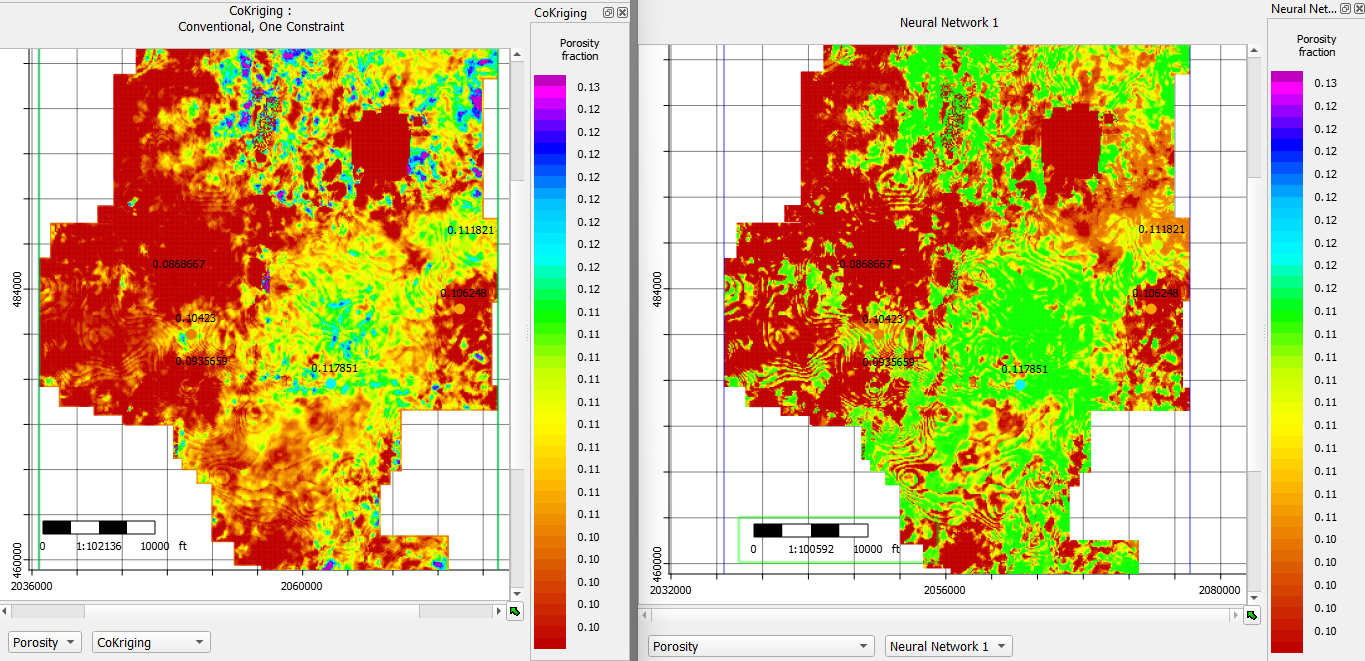
Pro4D
Pro4D
Analyze Production Related Effects
Pro4D enables timelapse studies to track production-related changes in a reservoir and determine areas of bypassed reserves or inefficient production. Pro4D’s complete suite of tools can model a whole range of anticipated reservoir scenarios, both at log and synthetic seismic scale in terms of temperature, pressure and fluid saturations.
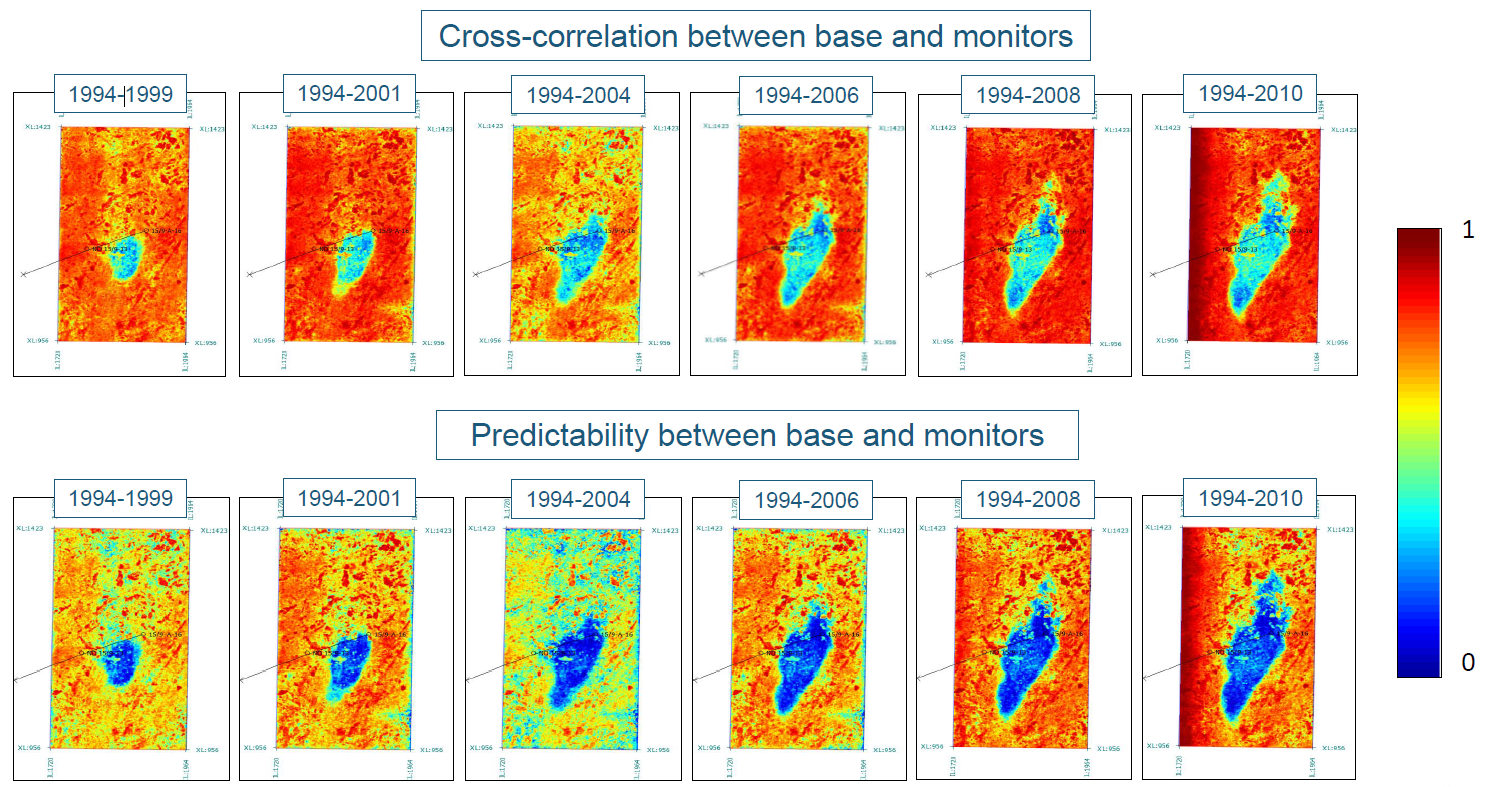
ProMC
ProMC
Effective Analysis of Multi-component Data
ProMC allows consistent interpretation of multicomponent data. It addresses the challenges of differences in event times, frequencies and reflectivity between PP and PS seismic volumes. The easy-to-use and intuitive work environment offers interpreters the ability to handle the increased number of seismic and attribute volumes inherent in a multicomponent project.
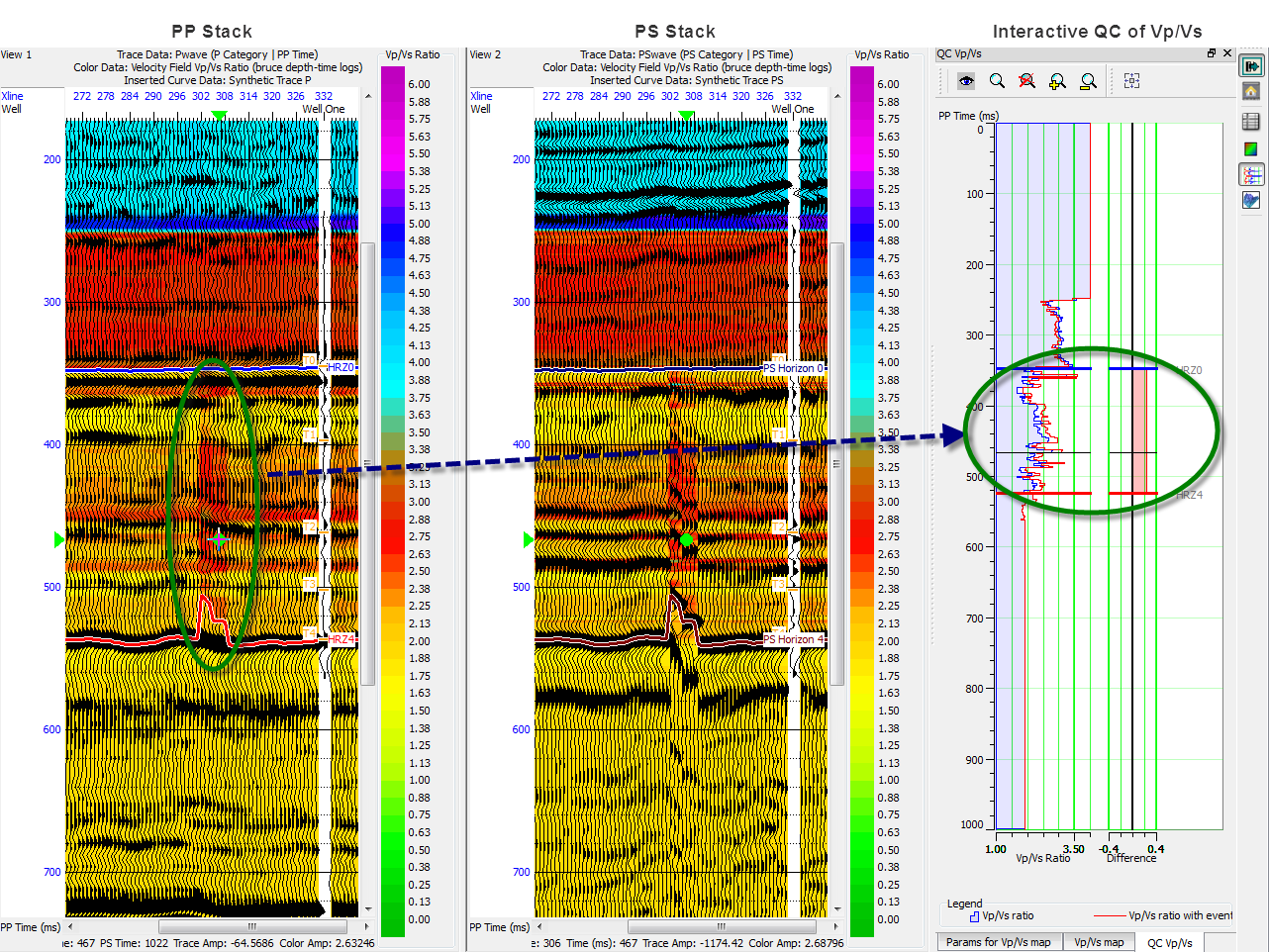
AFI
AFI
Estimate uncertainty and enhance AVO results
AFI (AVO Fluid Inversion) calculates the uncertainty in fluid predictions derived from AVO. Designed as an extension of the AVO application, AFI integrates Biot-Gassmann fluid substitution, Monte Carlo simulation, and Bayesian estimation methodologies to generate fluid probability maps and perform uncertainty estimates. These maps enable a quantitative assessment of exploration success likelihood and enhance the credibility of the AVO process.
